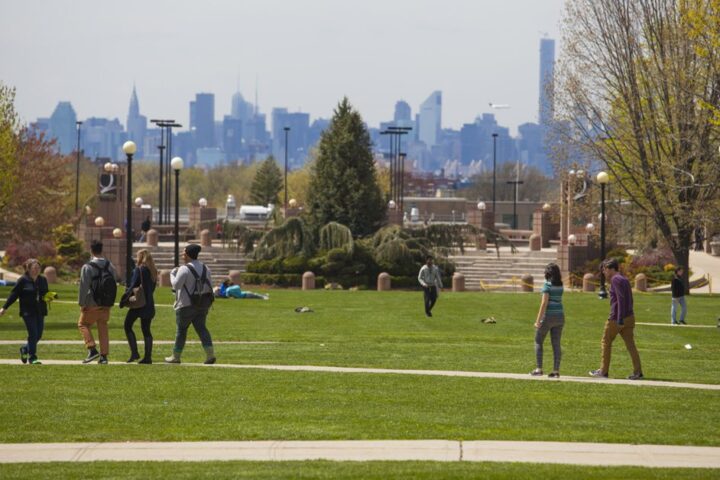The Godwin-Ternbach Museum’s latest exhibition, “The Psychology of Portraiture” highlights the study of portraits throughout time. The museum showcases a diverse collection of art pieces from as far back as 5th century BC to contemporary pieces of the present millennium. This exhibition explores the scientific aspect behind portraits.
The exhibition features more than 60 pieces and will run from February 15th to May 16th.
One of the earliest works the exhibition includes is the ‘‘Mask of Silenus.” This Roman piece is from the 5th century BC. Another old piece, ‘‘Funerary Head,” originating from Syrian Palmyra around 200 BC, is also featured in this exhibit.
Farhin Majid, a freshman neuroscience major, went to the exhibition and learned something new.
“It wasn’t that scientific or psychological as I perceived it to be from the title. But I learned that stuff that I didn’t think were portraits were portraits. A street vendor in Manhattan, a guy in a taxi. It makes perfect sense that they are portraits. And the fact that they can be 3D too, like masks and statues, is very interesting,” Majid said.
Later works from the medieval era to the Renaissance are also included in the exhibition. One such example would be “Madonna between Saints Francis and John.” Modern, surrealist and contemporary works of Max Ernst, Amy Ernst, William Gropper, Käthe Kollwitz, Larry Fink, Andy Warhol and Claudia DeMonte are also part of the display.
There are three striking pieces upon entering the showcase, each mounted on gray slabs of wall separate from the rest of the artwork. One of them being “Charles V of Spain” by Anthonis Mor van Dashorst from 1550. This piece originates from the Renaissance, where portraits were undergoing a revival.
Another featured piece is a statue titled “Figure of Papal Saint” from around 1500-1600, which exudes elegance and amplifies the vintage aesthetic of the display. The third wall was a collection of masks and 3D pieces called “The Timeless Gaze.” The wall tells a story of diversity within the history of portraiture, highlighting the different techniques used in portraiture and signifying its prevalence throughout time.
More artworks adorned the second floor, one of them being Steven Balogh’s “Ritual II: Lost Innocence.” This piece was a display of a ballet shoe with protruding blades. The second floor also has a collection titled “The Human Condition” which portrays the artists’ yearn for justice, with the stories behind each of these portraits containing heavy feelings of sorrow.
There were more collections of art with similar themes throughout the exhibition. “A Sense of Place” was a photographic collection revolving around New York. “Men Observing Women” was another collection that depicted how women have been the central subjects of art throughout history, serving as sources of inspiration to many men. There was also a collection of “Pop Art” with a more modern take on the science of portraits.
As visitors delve deeper within this exhibition, they come to realize that it spans across various mediums of art. The exhibit raises questions of injustice, society, and their portrayal within art, leaving visitors with a lasting impression of the human experience captured within the lines of a face.












Masha Allah ❤️❤️
Well expected dear Vari.
Will understand more deeper and able to illustrate with profound meaning and explanation with time.
Keep going our blessings always with you.
Love and hugs